XIX International Scientific Conference for Students and PhD Students «YOUTH AND PROGRESS OF BIOLOGY» – Programme of the conference
Programme of the conference, Lviv, 26 – 28 April 2023
Read more »Head of the Department of Plant Physiology and Ecology – Myroslava Kobyletska, PhD, Associate Professor. Employees of the Department of Plant Physiology and Ecology share an interest in studying plants as organisms, from wild plants (rough-haired sedge, meadow clover), economically essential plants (energy willow, wheat, buckwheat, sunflower) to plant model objects (Brachipodium).
Their research activities focus primarily on three broad areas: plant growth and development and ways to manage them with biologically active substances; mechanisms of plant resistance to adverse factors (heavy metals, salinity, phytopathogens, high and low temperatures) and the possibility of their use for remediation of contaminated environment; obtaining plant products with proper micronutrient composition, biofortification of plant products.
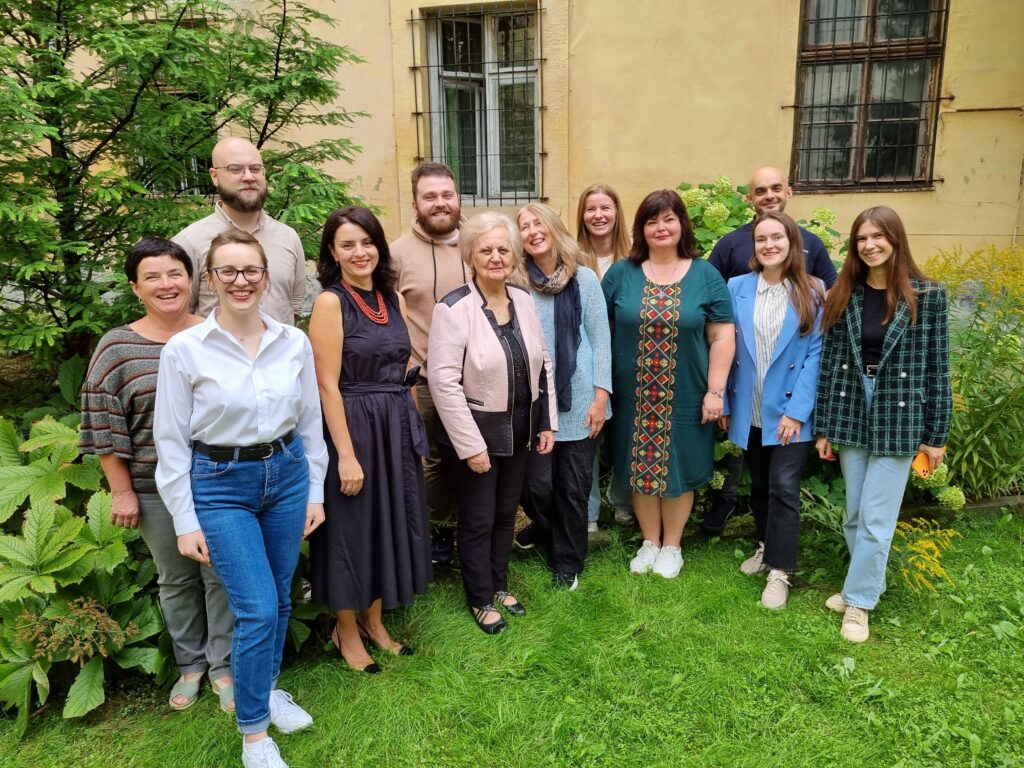
The staff of the Department of Plant Physiology and Ecology (lecturers, scientists, post-graduate students, engineers)

The origins of plant physiology at the Lviv University related to the names of Professors of botany Emil Godlevsky, Marjan Ratsyborskyy, private associate professor of anatomy and plant physiology, Dr. Ignatius Shyshylovich, the director of the Botanical Garden in Lviv, Teofil Tsieselsky, botanist-physiologist Bronislav Stefan Niklyevsky.
In 1907 was established Biological and Botanical Institution – structurally separate administrative unit of the Franz I. Royal University of Lviv, corresponding to the modern department, its founder and first director (1907 – 1912) was professor of botany Marjan Ratsiborskyy.
In 1913 – 1915 the Institute was headed by prof. Sigmund Voitsitsky.
The most powerful figure at the initial stage of the development of the Department of Plant Physiology at Lviv University was Professor Severin Yuzef Kshemenevsky, who headed the institute from 1919 until the war (1941) and contributed to raising the level of plant physiology teaching. In 1929 the Institution was renamed to the Institute of Anatomy and Plant Physiology.

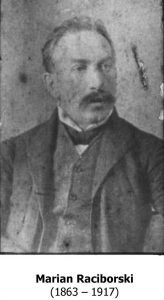

In the post-war period (1945-1974), the Department of Plant Physiology at the University of Lviv was led by Prof. Sergiy Orestovich Grebinskyy, a well-known expert in the field of physiology and biochemistry of plants, the author of over 100 scientific works, popular textbooks.

Prof. Sergiy Orestovich Grebinskyy
Books by prof. S.O. Grebinskyy
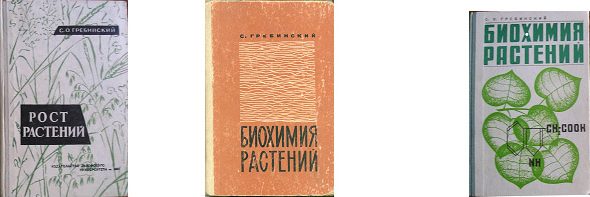
1961 1965 1975
The department conducted active scientific activities and organized the first scientific conference in the Soviet Union on the physiology and ecology of plant growth (1958).

From 1974 to 1981, the department was headed by an associate professor Lyudmila Alexandrovna Lukova. This period is distinguished by the high level of educational and scientific work: in different years the famous plant physiologists were teaching at the department: professors V. I. Kefeli, G.Yu.Molotkovskii, D.B.Vahmystrov (Institute of Plant Physiology, USSR Academy of Sciences, Moscow) and Prof. I.G. Shmatko (Institute of Plant Physiology, Academy of Sciences of the USSR, Kyiv) successfully hosted the session of the All-Union Society of Plant Physiologists “Plant Growth: Phenolic and Indole Regulators” (1979).

Associated Prof. L. A. Lukova, 1923 – 2005
In 1976 there was a unification of two separate departments – Plant Physiology and Morphology and Taxonomy of Plants and head of the combined department became geobotanist, Associate Professor George Yakymovych Yermachenko.

Associated Prof. G.Y. Yermachenko, 1927 – 2006
Despite the unification of the departments, plants physiologists continued to work on their scientific subjects. In 1988 associate professor Olga Istvanivna Terek defended his doctoral dissertation in the field of plant physiology and in 1991 became the head of the Department of Morphology, Taxonomy and Physiology of Plants. On her initiative and the decision of the Scientific Councils of the Biological Faculty and Lviv University on the orders of the Rector on September 1, 1992, the Department of Plant Physiology was officially restored.

Prof. Olga Terek
Taking into account the ecological direction of scientific research and teaching of ecological disciplines at the department in 2000, the Department of Plant Physiology was renamed into the Department of Plant Physiology and Ecology.
The newest stage of the department’s development has been started – special disciplines have been restored for the preparation of plant physiologists – specialists and masters, and new ecological special courses have been introduced.
Continuous training of PhD students is carried out.
Propounded research on the physiology and biochemistry of plant growth at different levels and using physiologically active substances, began studying the adaptation of plants to unfavorable environmental factors.
The staff of the department organized four international conferences, scientific lectures, seminars.

Participants of the 1st International Conference “Ontogenesis of Plants in a Natural and Transformed Environment. Physiological, biochemical and environmental aspects “, 1998.

Participants of the 2nd International Conference “Ontogenesis of Plants in a Natural and Transformed Environment. Physiological, biochemical and environmental aspects “, 2004.
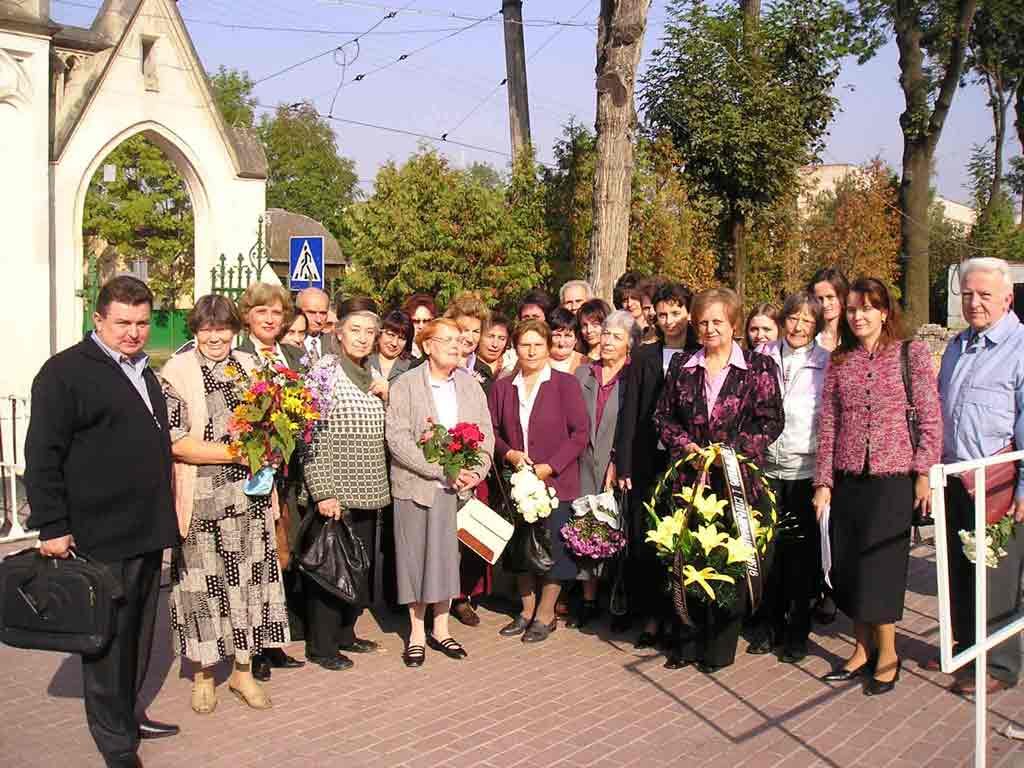
Participants of the readings devoted to the 100th anniversary of the birth of professor, former head of the department Grebinsky S.O., 2005.

Participants of the 3rd International Conference “Ontogenesis of Plants in a Natural and Transformed Environment. Physiological, biochemical and environmental aspects “, 2007.
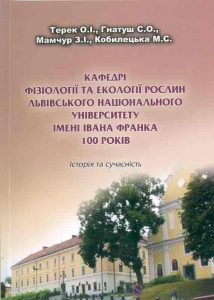
On the department there is a scientific school of professor O.I. Terek “Regulation of growth and adaptation of plants for the action of physiologically active substances“.
In 2017, the Department held the IV International Conference “Ontogenesis of Plants in a Natural and Transformed Environment. Physiological, Biochemical and Environmental aspects “. Participation in the conference was attended by more than 100 participants from leading scientific institutions of Ukraine, Germany, Austria, USA, Czech Republic, Belarus, Poland, Croatia, Slovakia and France.
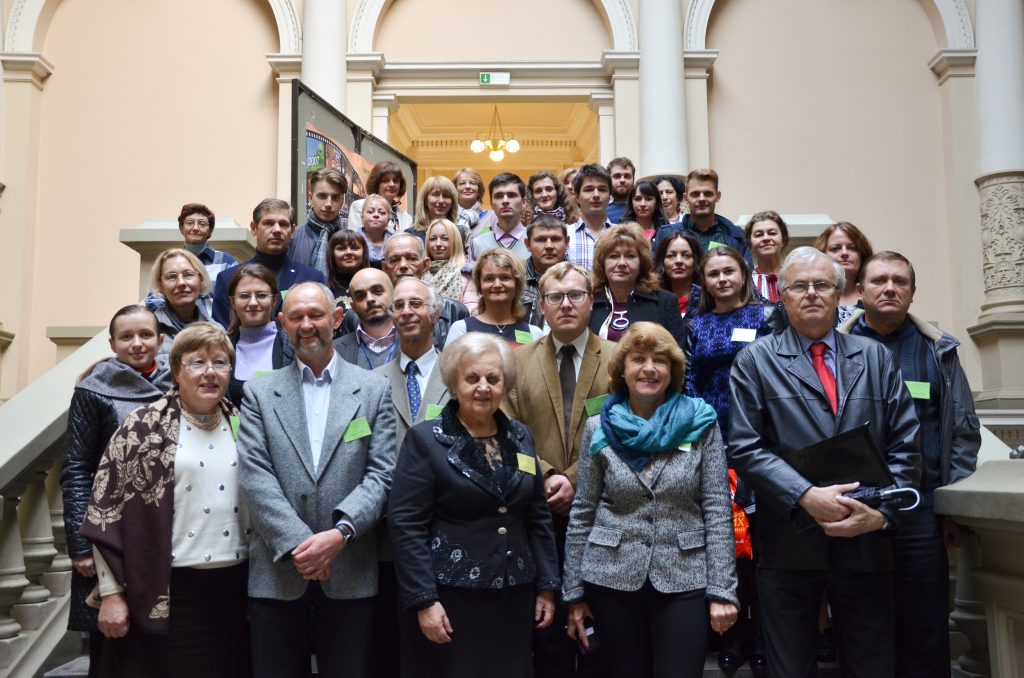
Participants of the 4th International Conference “Ontogenesis of Plants in a Natural and Transformed Environment. Physiological, biochemical and environmental aspects “, 2017.
| ChairpersonMyroslava Kobyletska | Chairperson |
| ProfessorOlga Terek | Professor |
| Associate ProfessorOksana Mamchur | Associate Professor |
| Associate ProfessorIolanta Mykievych | Associate Professor |
| Associate ProfessorOstap Patsula | Associate Professor |
| Associate ProfessorNataliya Romanyuk | Associate Professor |
| LecturerOrysia Makar | Lecturer |
Кобилецька М.С., Терек О.І. Біохімія рослин: навч. посібник. Львів: ЛНУ імені Івана Франка. 2017. с.
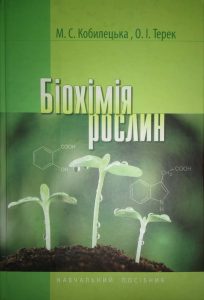
Екологія рослин: методичні вказівки до лабораторних занять і організації самостійної роботи студентів напряму підготовки 6.040102 – біологія та 6.040106 – екологія, охорона навколишнього середовища та збалансоване природокористування / Укл.: О.І. Пацула, Н. Д. Романюк – Львів: Львівський національний університет імені Івана Франка, 2015. – 100 с.
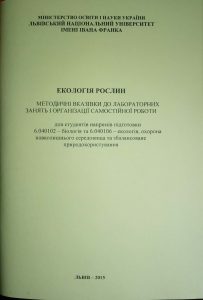
Загальна екологія та неоекологія: методичні вказівки до лабораторних занять і організації самостійної роботи студентів напряму підготовки 6.040106 – екологія, охорона навколишнього середовища та збалансоване природокористування / Укл.: Пацула О.І., Цвілинюк О.М.– Львів: Львівський національний університет імені Івана Франка, 2012. – 56 с.
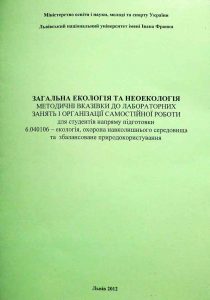
Терек О.І., Пацула О.І. Ріст і розвиток рослин: навч. посібник. Львів: ЛНУ імені Івана Франка. 2011. 328 с.
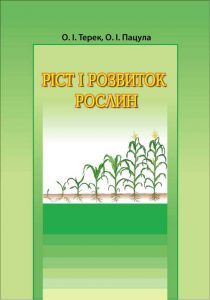
New plant growth regulators: basic research and technologies of application. – Monograph / еditors S.P. Ponomarenko, H.O. Iutynska, – Kyiv: Nichlava, 2011. – 211 p.
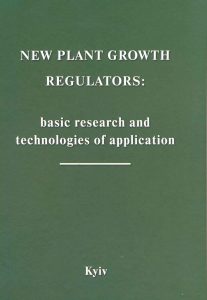
Биорегуляция микробно-растительных систем: Монография / Под ред. Г. А. Иутинской, С. П. Пономаренко. — К. : «НІЧЛАВА», 2010. — 472 с.
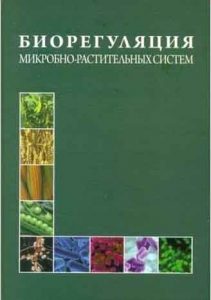
Н.Бойко, Ш.Балажі, Ю.Л.Голас, Г. Коваль, Н.Ковальчук, В.Козловський, А.Колесник, О.Колесник, О.Легань,Н.Романюк, С.Сухарєв, М.Д.-Тот, І.Чонка, С.Чундак, Л.Шимон Забруднювачі та їх впливи на екологічно вразливі екосистеми Верхнього Потисся/ Ужгорож-Ніредьгаза: Bessenyei Gyorgy. 2008. 380 c.

Ольга Терек / Упоряд. і вступ. ст. М. Кобилецька, О. Цвілинюк; Редкол. І. Вакарчук (голова) та ін. – Львів, 2007. – 48 с.
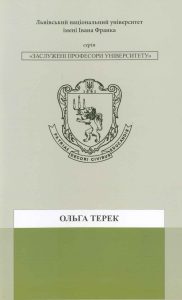
Терек О.І. Розвиток вчення про регуляцію росту рослин у Львівському національному університеті імені Івана Франка / О.І. Терек // Проблеми фітогормонології / гол. редактор академік НАНУ К.М. Ситник – Київ, 2007. – С. 347-372

Терек О.І. Ріст рослин: навчальний посібник. Львів.: вид-во Львівського національного університету імені Івана Франка, 2007. 248 с.

Терек О.І., Гнатуш С.О., Мамчур З.І., Кобилецька М.С.Кафедрі фізіології та екології рослин Львівського національного університету імені Івана Франка 100 років. Історія та сучасність. Львів: Видав. центр ім. І. Франка, 2007. 35с.
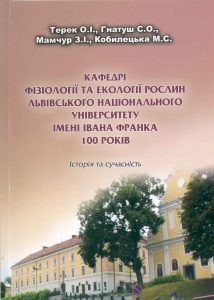
Онтогенез рослин у природному та трансформованому середовищі. Фізіолого-біохімічні та фізіологічні аспекти. Тези доповідей ІІІ Міжнародної конференції (Львів, Україна, жовтень, 4 – 6, 2007 року). Львів. В-во Львів. у-ту. 225 с.

Терек О. І., Цвілинюк О. М., Микієвич І. М., Романюк Н. Д. Фізіологія рослин. Методичні вказівки до лабораторних робіт з малого практикуму для студентів біологічного факультету / Львів, Піраміда. 2005. 160 с.
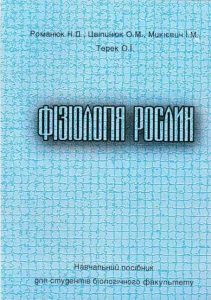
Кобилецька М. С., Терек О. І. Методичні вказівки до лабораторних робіт із спецкурсу “Фізіологія та екологія фотосинтезу” для студентів біологічного факультету / Львів : Сполом, 2005. 48 с
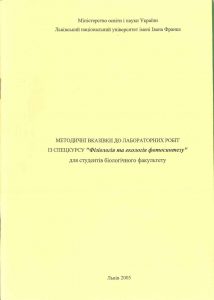
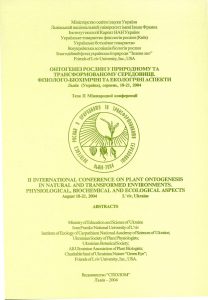
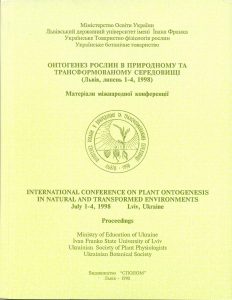
Терек О. И. Рост растений и физиологически активные вещества : учеб. пособие / Терек О. И. – К. : Высшая школа, 1990. – 51 с.
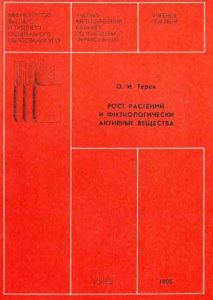
Scientific work at the Department is focused in two directions.
The first direction – in the field of physiology and biochemistry of plant growth.
Under the guidance of prof. O. I. Terek at the Department successfully developed the study of the physiological and biochemical basis of plant growth, initiated by the former head of the Department prof. S.O.Grebinsky. Conducted a comprehensive study of the action of physiologically active substances on complex integrated process – plant growth on models of different difficulty levels (cell, tissue, organ, a complex of organs and whole organism) in connection with nitrogen metabolism, allowing to specify the implementation of theoretical principles of plant growth. The concept of the existence of hormonal fields in plants with a certain gradient of separate components and their receptors is developed, which plays an important role in the regulation of morphogenetic and physiological processes in the plant. The complex interdependence between individual cells, tissues and organs of intact plants is shown, which are related to the reorientation of metabolic pools in ontogenesis and changes in the level of endogenous phytohormones in attracted centers.
It was found that high concentrations of synthetic analogs of phytohormones (6-BAP, α-NOA) cause morphological changes in plant roots due to cellular loss of polarity and lead to isodiagnostic growth. In the cells, there is a destruction of the hormonal field and violation of synthetic processes.
Conducted study the mechanism of action of the new growth regulators of Ukrainian production – ivin, emistym and agrostymulin, which are synthesized at the Institute of Bioorganic Chemistry and Petrochemistry of the National Academy of Sciences of Ukraine. It has been established that auxin type of activity is characteristic for ivin, for emistym is cytokinin, and for agrostymulin, both types of activity. It was shown that the action of these substances changes the permeability of membranes, the balance of endogenous phytohormones increases the intensity of protein synthesis and mitotic activity, which causes the stimulation of growth processes. The efficiency of usage of growth regulators ivin and emistym C for the increase of productivity and improvement of the quality of root crops of carrots and parsnips were also determined, and optimal orders of their application as an element of modern technology of growing of root crops were established.

Experimental field with crops of carrots

Experimental field with crops of parsnips

Carrots plants cv. Carlena under growth regulators. 1 – control, 2 – treatment crops with ivin, 3 – treatment crops with emistym, 4 – treatment of seeds and crops with ivivn, 5 – treatment of seeds with ivin, 6 – treatment of seeds and crops with emistym С, 7 – seed treatment with emistym C.

Parsnip plants cv. Kruhlyi under growth regulators. 1 – control, 2 – treatment crops with ivin, 3 – treatment crops with emistym, 4 – treatment of seeds and crops with ivivn, 5 – treatment of seeds with ivin, 6 – treatment of seeds and crops with emistym С, 7 – seed treatment with emistym C.
The second direction of scientific research at the Department is related to the study of the influence of environmental factors (unfavorable temperatures, heavy metals, emissions of industry, petroleum products) on the physiological and biochemical parameters of plants in order to identify specific stress markers on the action of various stressors and eliminate their negative effects.
On the basis of the complex studies (including at the cellular level), first conducted on the Department, under unfavorable environmental factors (hypo- and hyperthermia, heavy metals) found significant changes in the mitotic activity, balance of endogenous phytohormones and ions (K +, Ca 2+, Na +), polymorphism of cytoplasmic proteins and activity of enzyme systems (ATPase, peroxidase). It is shown that physiological adaptation to adverse factors is carried out with the participation of activation of intracellular resources and correlated, in particular, with the induction of the synthesis of specific stressful proteins, and visually manifested in the gradual normalization of growth. Modification of the synthesis of proteins due to the effects of thermal shock and heavy metal ions causes the emergence of new stress proteins, indicating a change in the expression of genes. Antistress, tread effect of growth regulators – a synthetic analog of phytohormones of cytokinin – 6-BAP and Ukrainian growth regulators, in particular, emistym C and zeastymulin, have been detected.
The study of the chemical composition of local phosphoric and potassium fertilizers of Ukrainian deposits of middle Transdniestria and Rivne region was conducted. It was shown that phosphates and glauconites of these deposits have a low content of radionuclides and heavy metals. It is recommended to use them as ecologically clean cheap local mineral fertilizers for fertilization of agricultural and greenhouse plants.
Together with the scientists of the Faculty of Geology, the study of the ecological situation of natural objects that differ in anthropogenic load – Yavoriv military landfill (YML) and Yavoriv national natural park (YNNP) – was carried out to determine the content of radionuclides and heavy metals in soils and vegetation. It was investigated that the contamination of soils and plants of YML and YNNP does not exceed norms. It has been shown that plant nutrition with phosphorites and glauconites positively influences a number of physiological and biochemical parameters, and biological properties of soils improve legumes plants. Therefore, with the possible transition of these territories to agricultural use, soil remediation will be supported by local fertilizers and planting of leguminous plants.
Since 2006, the Department has been undergoing a contracting project (scientific adviser, associate professor V. I. Baranov), whose purpose is to rehabilitate the soil and plant greenery of the waste heap of coal mines of the Central Enrichment Plant near the town Sosnivka, Lviv region. The chemical composition of the dumps’ rocks has been determined, its mapping has been carried out, the level of phytotoxicity of these rocks has been determined. Selection of resistant plant species and research on the influence of non-traditional organo-mineral fertilizers and plant growth regulators are being conducted for the purpose of their use in order to increase the resistance of plants.

A general view of the Central Enrichment Plant dump

The top of the dump – the burned rock (red), the plateau – non-burned rock (black color)
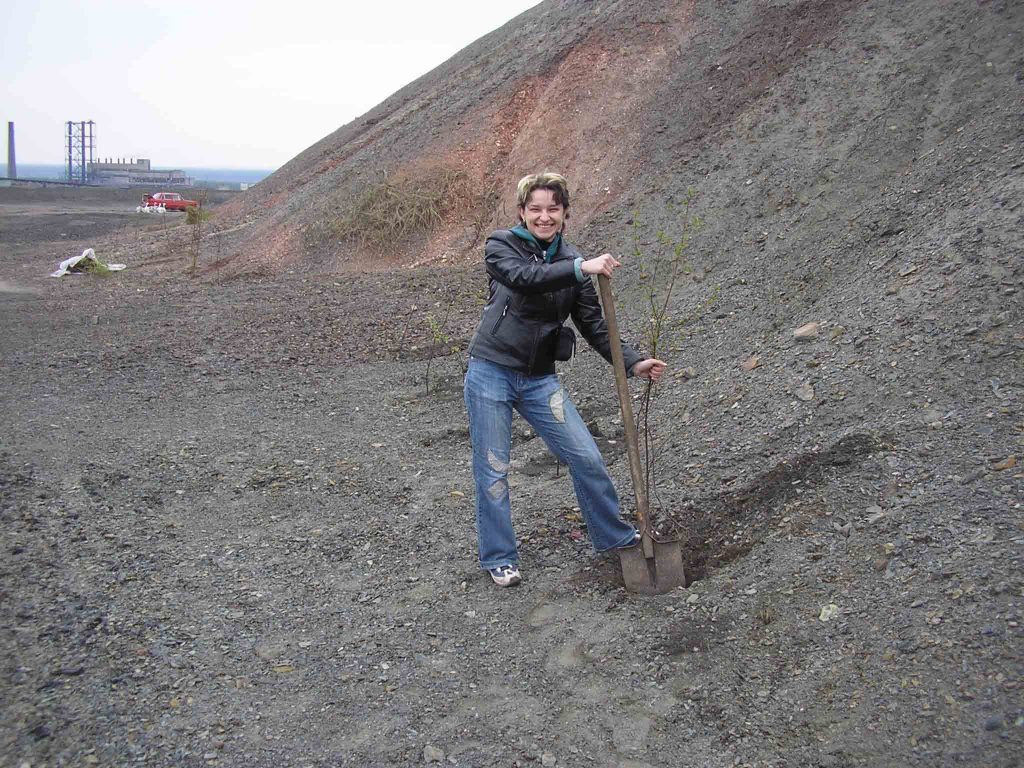
Ph.D. student Fecko Zoryana planting seedlings on the dump
In recent years, the prospects of using different plants for phytochemical treatment of soils contaminated by oil products and heavy metals have been studied. Most stable by durability Carex hirta L. plant has been selected. It has been found that the cultivation of Carex hirta L. plants on oil-contaminated soils contributes to their purification, increasing the content of the main elements of mineral nutrition (phosphorus, potassium, magnesium) and the improvement of adsorption properties of the soil.
In this case, the protective mechanisms of oxidative stress are activated in plants, in particular, the biosynthesis of ascorbic acid, carotenes and the intensity of lipids peroxidation are increased. The use of ecologically plastic and viable long-rhizome species Carex hirta L. to clean the soils form oil contamination was proposed and a declarative patent for the utility model “Method for cleaning soils contaminated with oil” was received (patent 16345 Ukraine, IPC (2006)). The possibility of using corn and sunflower plants for the needs of phytoremediation of soils contaminated with heavy metals has been proved.

Control
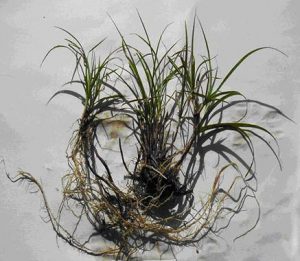
Oil, 50 g/kg
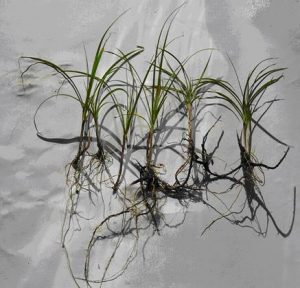
Oil 100 g/kg
Sedge plants from oil-contaminated soil
In 2003-2004, prof. Terek O.I. and associate professor Romanyuk N.D. participated in the project “Study of Mobilization, Accumulation, Distribution and Bioremediation of Heavy Metals in Contaminated Ecosystems of the Tisza River Basin” jointly with Uzhgorod National University, the Institute of the Ecology of the Carpathians, National Academy of Sciences of Ukraine and the Pedagogical Institute of the city of Nyíregyháza (Hungary).
Under the scientific guidance of prof. OI Terek with the participation of associate professor M.S. Kobyletska and associate professor O.I. Patsula was developed a joint Ukrainian-Hungarian project on scientific and technical cooperation for 2007-2008 “Purification of the wetlands of the Tisza River by methods of phytoremediation”, which received a grant from the Ministry of Education and Science of Ukraine. The species composition of the studied territory was studied and it was established that the modern composition and distribution of vegetation on the site is due to the features of the geomorphological structure, climate, soil cover and the degree of anthropogenic impact on the ecosystem. It was established that the highest level of anthropogenic pollution was observed on the rainforest section of the river Tisza near city Chop. Plants that grew there, had the highest activity of the antioxidant system.
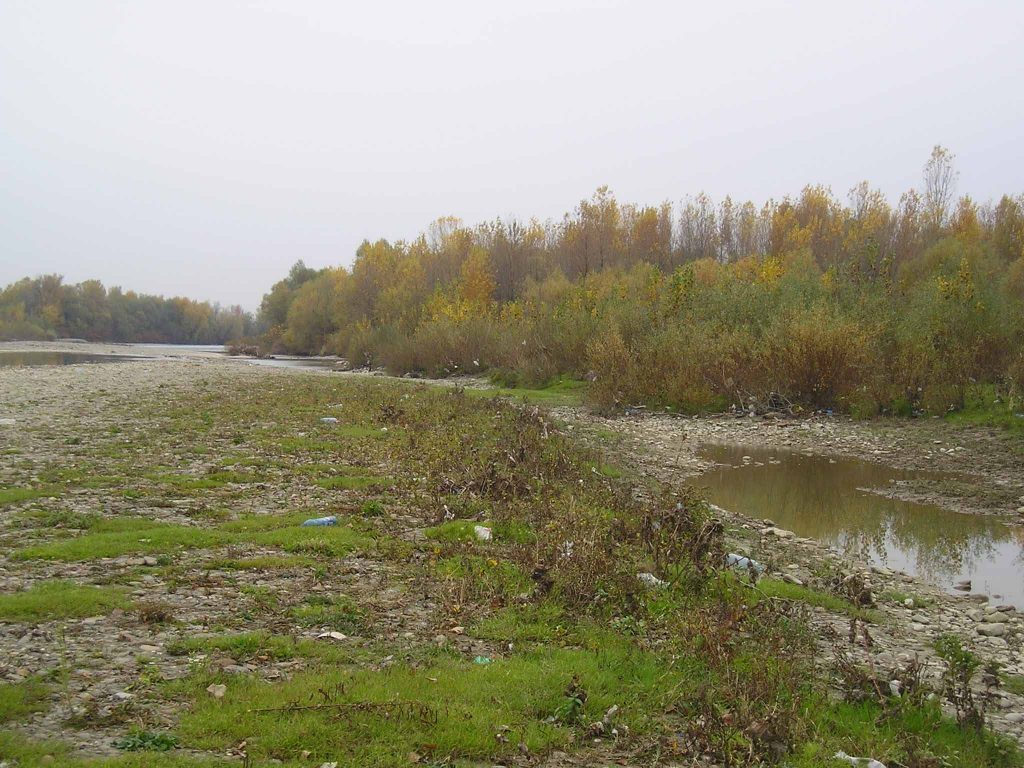
The river Tisza near the town of Vinogradiv
Department has a postgraduate study on specialty 03.00.12 – plants physiology, where 3 postgraduate students are studying.
In general, during the years of the restored Department of Plant Physiology, 18 Ph.D. have been trained here.
On the basis of many years of research by professor O. I. Terek and her students, a scientific school “Regulation of growth and adaptation of plants with the participation of physiologically active substances” was formed.
Since 2017, at the Department in cooperation with the Cornell University (USA) is being implemented the project OISE-16-62755-0, “Fundamental Approaches to Increase Crop and Nutritional Value of Wheat” funded by the CRDF Global.
The purpose of the project is to study the physiological bases for the formation of quality grain of spring wheat of domestic breeding, with a focus on the content of Fe, Zn and Cu, which will allow to estimate the limits of the phenotypic variability of these varieties and will become a prerequisite for further molecular selection of genotypes with high content of trace elements in grain.
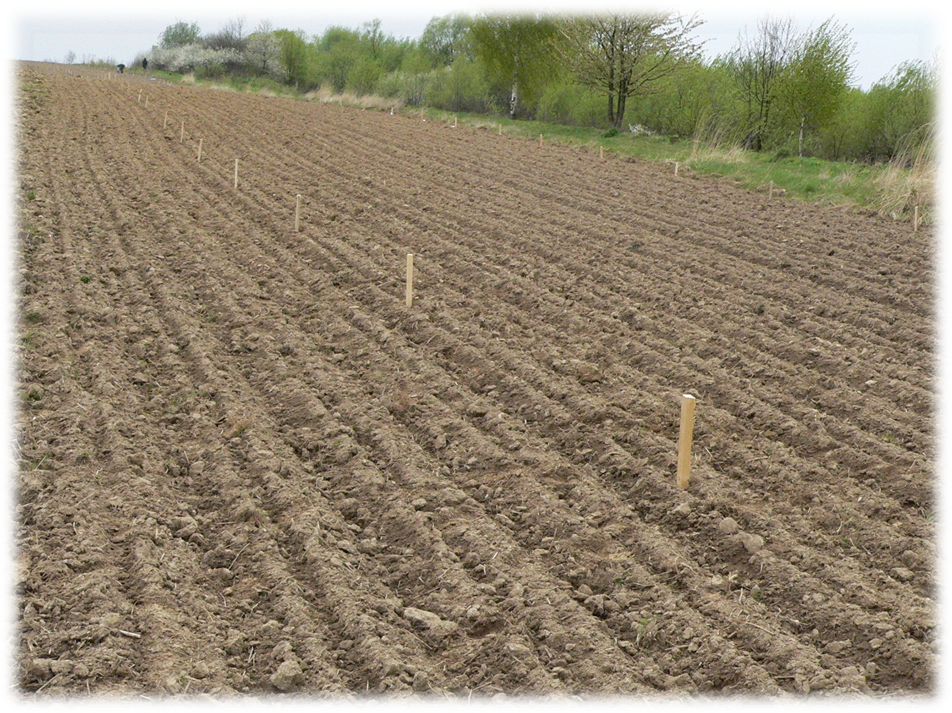
Experimental site near Dolishniy Luzhok (Spring, 2017)
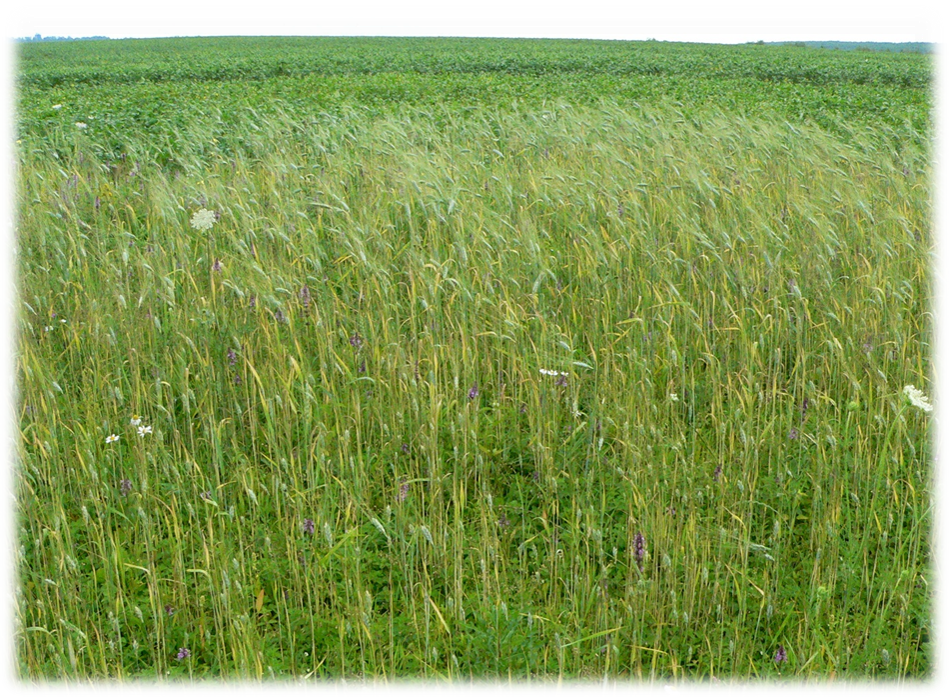
Experimental site near Dolishniy Luzhok (Summer, 2017)
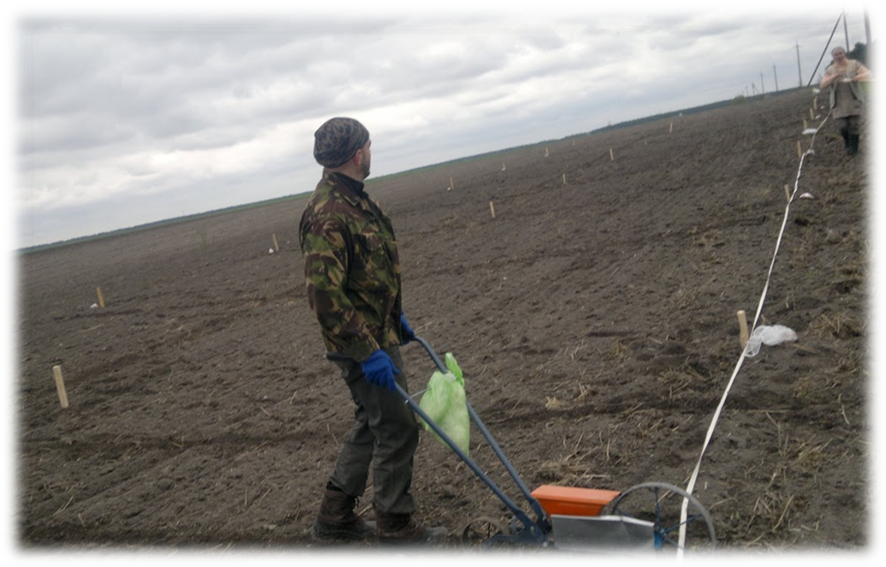
Experimental site near Dmytriv (Spring, 2017)
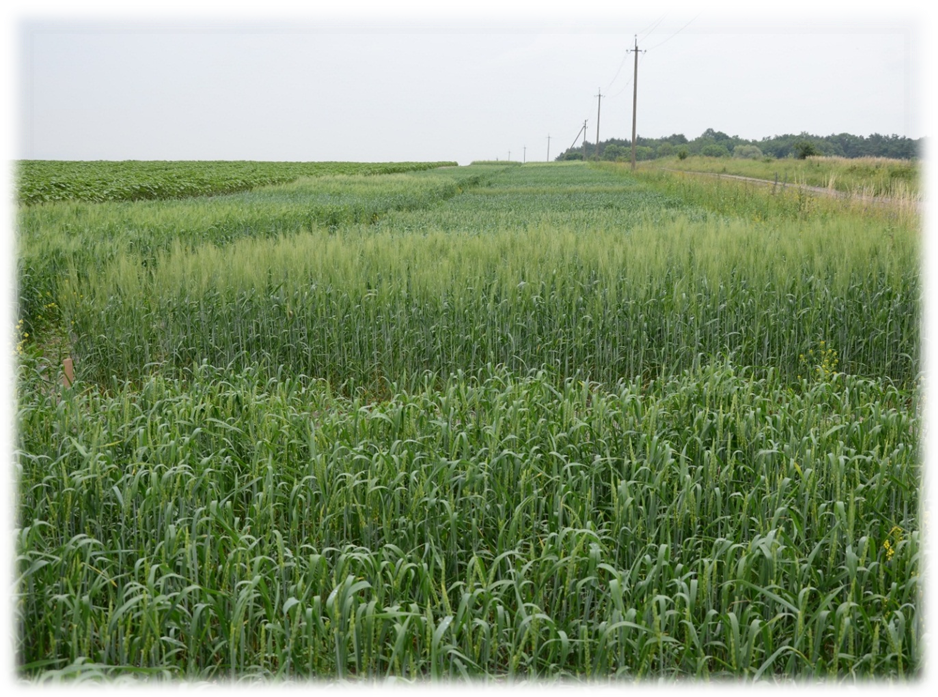
The experimental site near Dmytriv (Summer, 2017)
Submitted a joint request of Plant Physiology and Ecology Dept of Ivan Franko National University of Lviv, Dr. Salme Timmusk (Sweden), DSci Svitlana Khomenko (Myronivka Wheat Institute) joint project on “A transnational approach for integrating plant microbiome and plant breeding to increase crop quality and soil resilience“
Programme of the conference, Lviv, 26 – 28 April 2023
Read more »
We welcome you to submit your Abstracts to EBSA 2023!
The 14th EBSA congress at Stockholm University, Sweden
July 31 – August 4 2023
The Swedish Society for Biochemistry, Biophysics and Molecular Biology (SFBBM) is proudly the hosting 14th EBSA congress, jointly with EBSA and Protein Society, at Stockholm University, supported by the Swedish National Committee for Molecular Biosciences of the Royal Swedish Academy of Sciences. In this congress, we are honored to also collaborate with the Biophysical Society, IUPAB and SciLifeLab.
Only 10 days left...
Dear students and PhD students!
We invite You to take part in the XIX International Scientific Conference for Students and PhD Students “Youth and Progress of Biology”, dedicated to the 90th anniversary of academician of the National Academy of Sciences of Ukraine, professor Schelyag-Sosonko Yury Romanovych, that will be held on April 26-28, 2023 in Lviv, Ukraine.
The Conference is organized by the Faculty of Biology of Ivan Franko National University of Lviv, Institute of Biology and Earth Sciences, Pomeranian University...
Програма МіПБ 2022
Read more »Youth and Progress of Biology_Inform_lyst_2022
Read more »